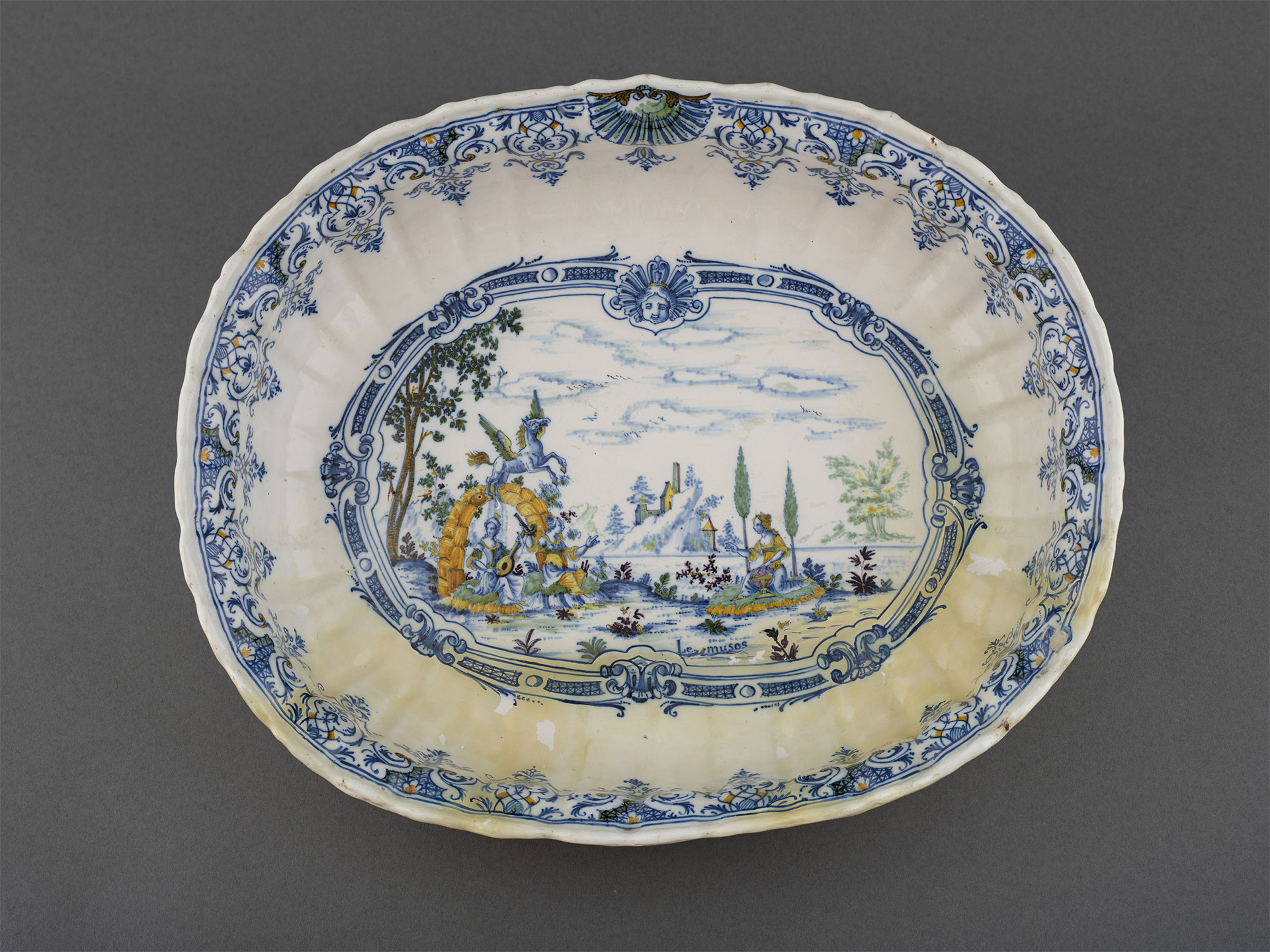
Moustiers (Francia)
Dish
"À broderies et figures" decoration (ca. 1740)
WORK INFORMATION
Ceramic, polychrome earthenware, 37 x 30 cm
Moustiers is a small village in the mountains of the French Prealps which became famous thanks to a dynasty of potter-painters, the Clérissy family. In 1677, Pierre Clérissy I (active until 1728), an accomplished earthenware painter, founded a pottery that was continued by his son Antoine (1728-1732) and by Pierre Clérissy II until 1783. The promulgation of various royal edicts at the end of the 17th and beginning of the 18th century favoured the production of pottery in Moustiers. These edicts prohibited the use of gold and silver tableware which, during this period, was sacrificed for the benefit of the State in order to pay for wars, trade with the Orient and excessive court expenses. From then on, tableware made here was successfully marketed to aristocratic families, not only in the south of France, but throughout the country.
One of the most successful ornamental repertoires was known as bérianesque or Bérain decoration, adapted to ceramics from 1699, and which scholars of Moustiers ceramics refer to as à broderies et figures. Jean Bérain I (1640-1711), the decorator of Louis XIV’s chamber and cabinet at the Palace of Versailles, created a new ornamental repertoire that became popular through the publication of his engravings in 1711. These were a series of compositions of grotesques or historiated scenes framed by rigorously drawn lace borders, inspired by the decoration of books and the engravings of jewellers and ornamentalists. Initially they were applied only in blue, but over time, as the use of mythological and allegorical scenes proliferated, a subdued polychromy began to be combined with blue chiaroscuro.
This oval dish with a slightly undulating rim features a central mythological scene with three female figures, possibly three muses, in a landscape with trees and architecture. One of the figures plays the mandolin under a stone archway overflown by Pegasus. Next to her, another muse holds what appears to be a parchment in her left hand. The third, half kneeling before a terrestrial globe, is looking at the former two. In the lower left-hand corner is an inscription: “Le musos”.

